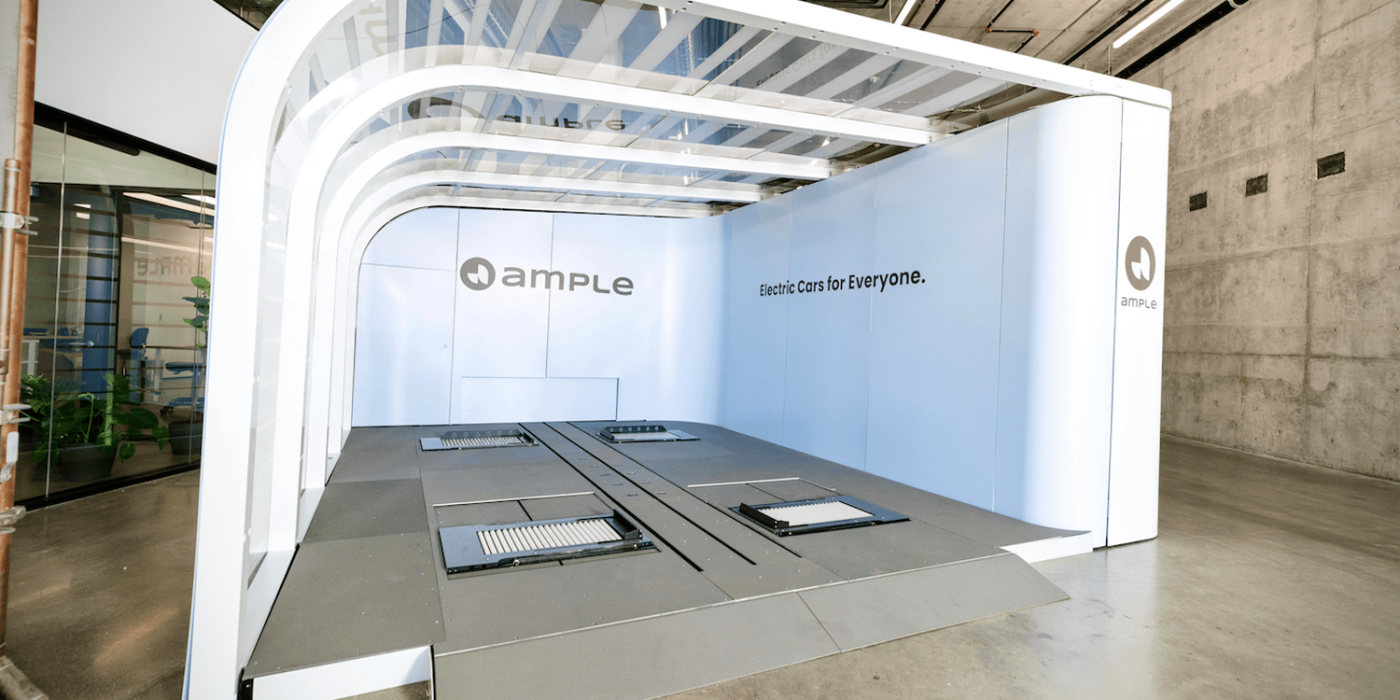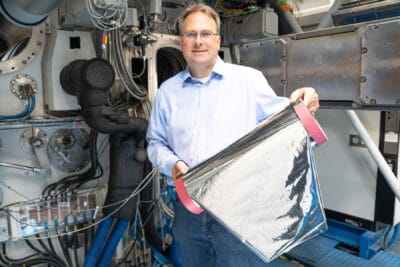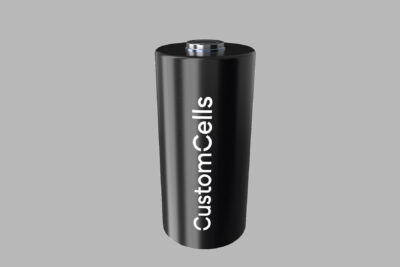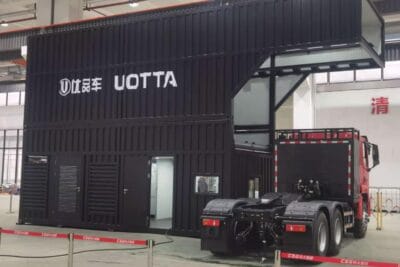Ample rolls out battery swapping in the USA
In the USA, electric mobility startup Ample has announced the rollout of its new modular battery swapping technology for electric cars. Currently, the company is focussing on fleets and says it has integrated its modular batteries into nine vehicle models across five different automakers.
Ample’s battery swapping stations are currently being deployed in California’s Bay Area with Uber being among the fleets using the system. Without giving further details and naming names, Ample says it is actively working with “a number of large automakers to enable mass deployment in the US, Europe, and Asia.”
Ample only says it has integrated its modular batteries into nine vehicle models across five different automakers. Ample currently supports the most common electric car for Uber drivers, the Nissan Leaf, along with some Kia electric vehicles. Tesla’s do not yet come with these systems. Although Tesla wanted to start battery swapping back in the day, the company focussed on private users (just like its sales model) and did not tap into the opportunity of bundling charging needs by catering to fleets. So far, only Asian electric mobility companies have been savvy to this highly advantageous infrastructure support.
Ample says it is using the world’s first modular battery-swapping system, which is not strictly speaking true. Modular battery systems and stations have been used here in Berlin by Greenpack and although type-specific, another battery-swapping station network is going to expand throughout Europe with Tier Mobility. Also very recently a consortium for standardizing battery sizes for motorbikes and smaller vehicles was formed. What has not yet succeeded in the West is a large scale roll-out of battery swapping systems, nor the cross-sector collaboration required to enable modular batteries to be used across a wider range of vehicle types. In China, with companies like BJEV and Nio, battery swapping stations have already taken off, now too with big battery makers such as SK Innovation, of course with supportive policies from the Chinese government enabling large scale rollout that is now underway. In Poland, battery swapping is being used for electric buses, and in the Netherlands has started battery swapping for container ships. Very early on the scene was the Taiwanese pioneer electric scooter company Gogoro.
Ample’s CEO, Khaled Hassounah, says their modular battery swapping system operates like “Lego blocks.” The number of battery modules needed is determined by the size of the electric vehicle.
Each Ample station requires no construction and can be assembled wherever two parking spots are available. At the battery swapping stations, a fully-autonomous system removes depleted battery modules from the car and replaces them with fully charged ones. Depleted battery modules then are placed on shelves to be recharged. Right now, the stations have a maximum capacity of 90 cars per day.
While ample is initially focussing on getting battery swapping systems going with fleets, they are aiming to eventually cater to private vehicle use. Ample envisages useful locations for the stations as being grocery stores, gas stations and highway rest stops.
Regarding use of resources and technology, it is battery swapping in general and modular and standardised battery units, in particular, are very advantageous to be able to keep up with constantly improving batteries, while electric vehicles require little maintenance and fewer new parts than their combustion counterparts. Like Nio discovered, the battery is the expensive and constantly changing part, an upgrade doesn’t need to involve the entire vehicle. Equally advantageous is the ability of battery swapping stations to be independent of grid use, meaning that the power can be brought in from other locations without maxing out the grid at peak use times.
But Ample looks like it is taking a very intelligent route, convincing mostly with the most obvious and immediate advantage of being fairly mobile and deployable anywhere, especially for fleets where time is money that directly impacts the profit of the company: Needing only ten minutes to fully recharge and being able to place mobile stations flexibly where they are most needed keeps vehicles in circulation at the right locations when and where they are required.





3 Comments